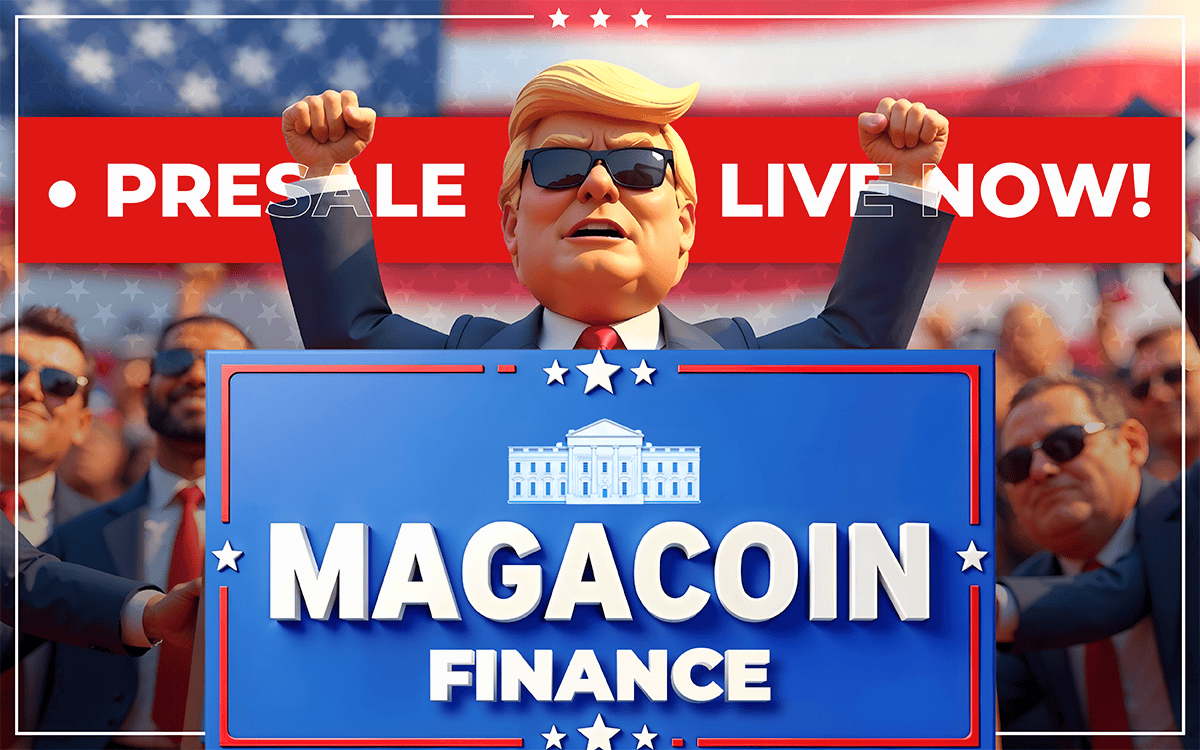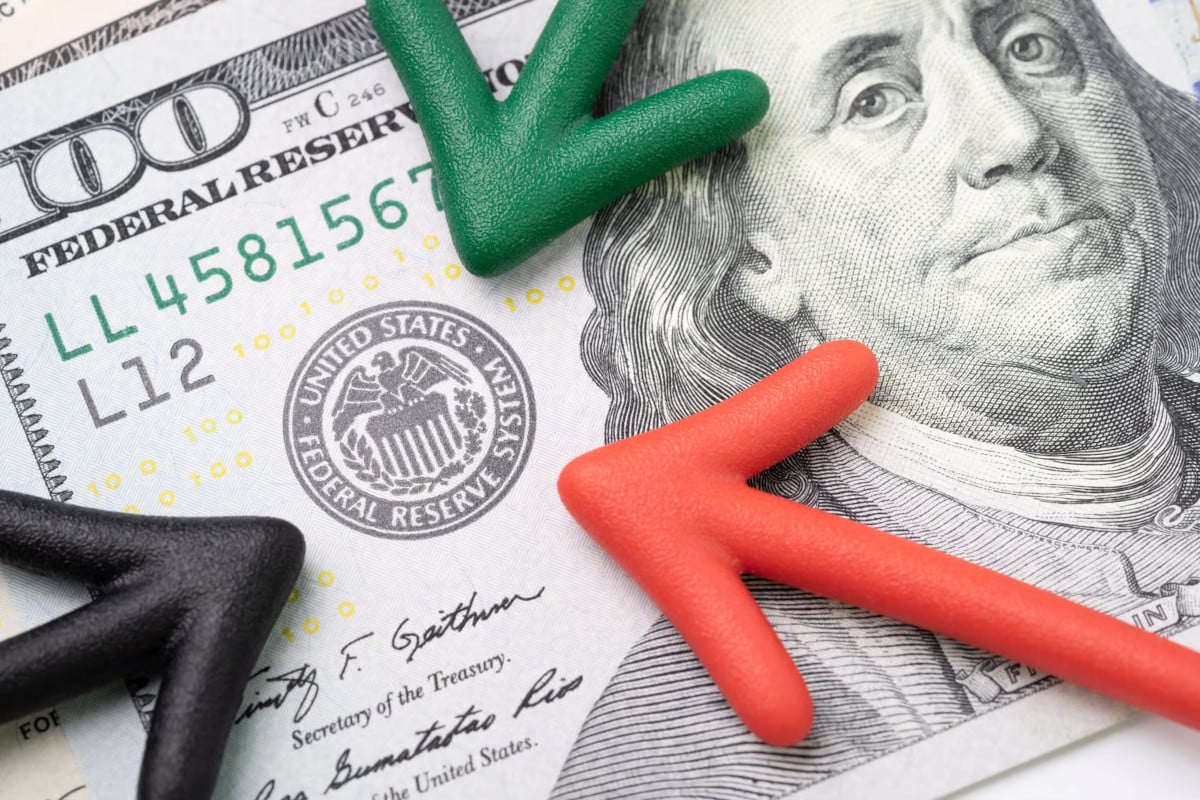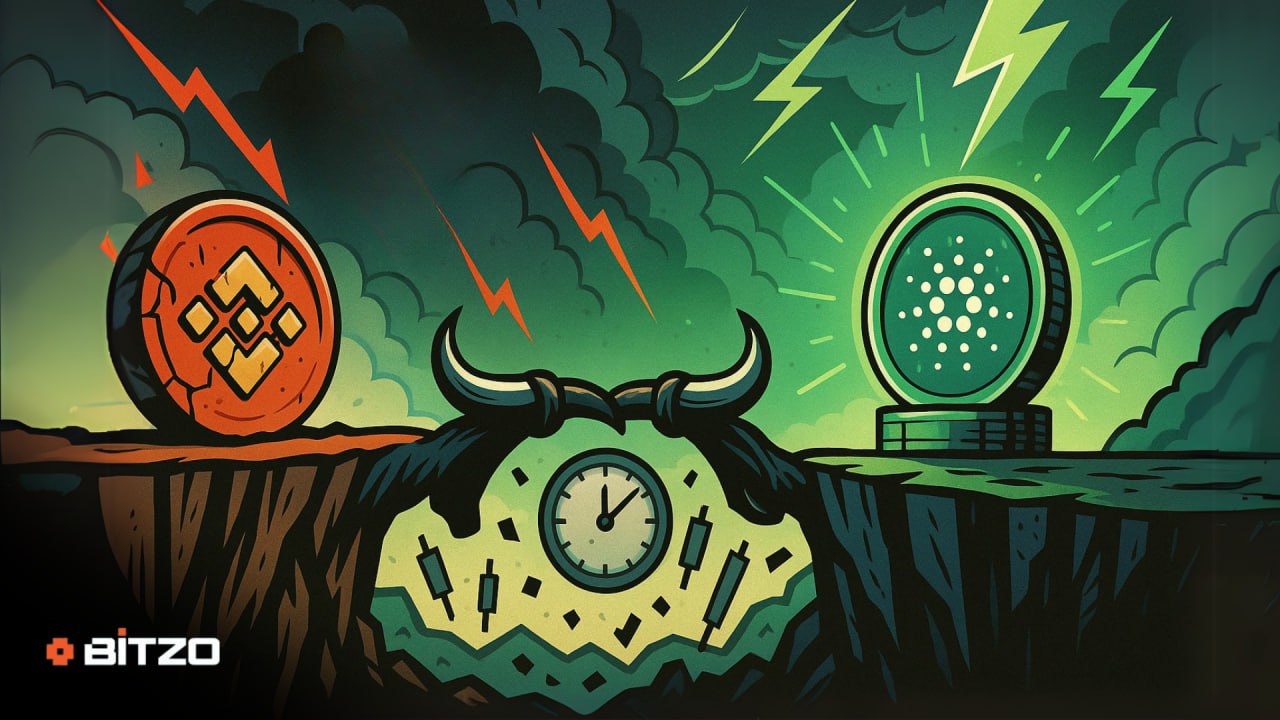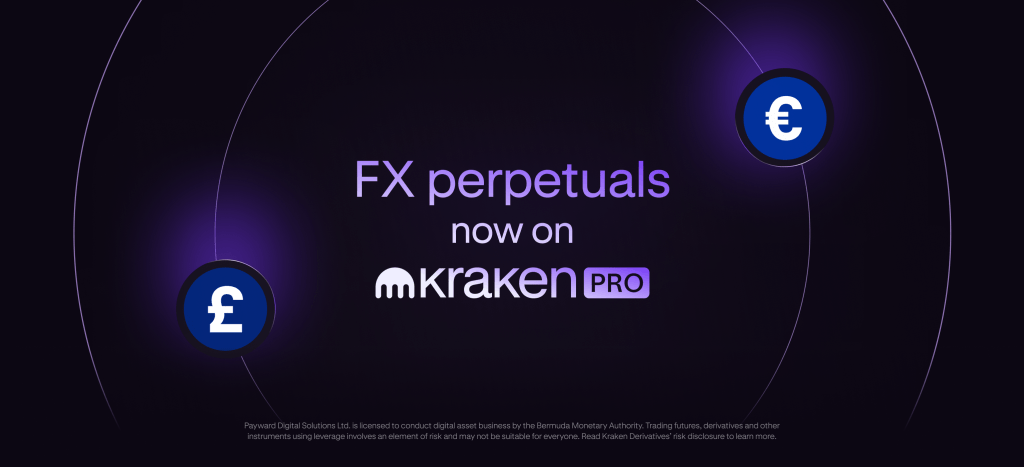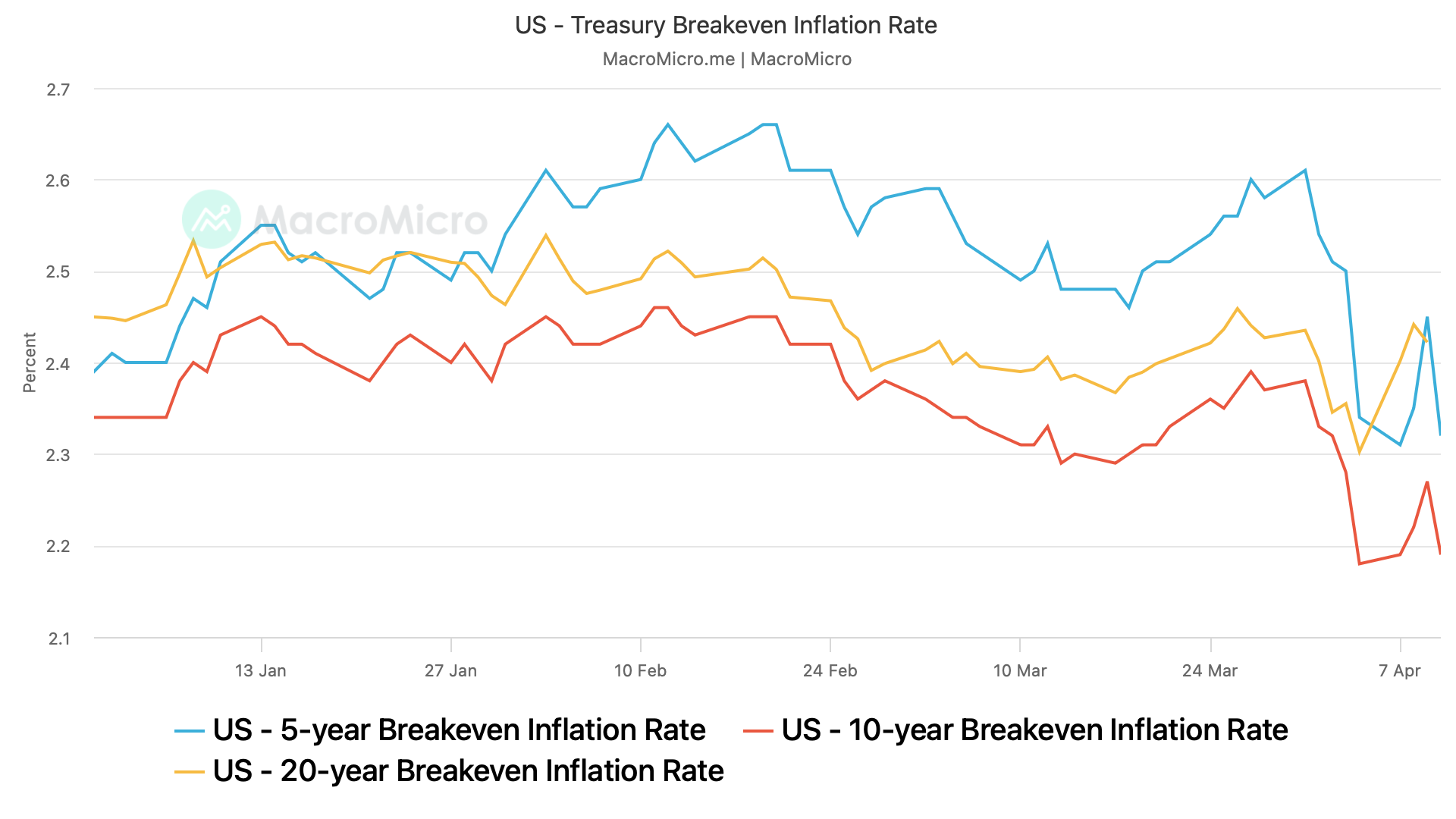
The ongoing U.S.-China trade war is likely to bring down inflation in the U.S. economy, key sections of the financial market indicate, offering bullish cues to risk assets, including bitcoin (BTC). In his inaugural address on Jan. 20, President Donald Trump promised to “tariff and tax foreign countries to enrich our citizens," and then fired the first shot against China, Canada and Mexico on Feb. 1. Since then, the trade tensions have escalated to such an extent that as of writing, the U.S. and China have imposed retaliatory tariffs on each other in excess of 100%. Tariffs increase the cost of imported goods, which are then passed on to the consumer and could lead to higher general price level in a consumption-driven economy like the U.S. Consequently since the trade war broke out, markets have been worried about a tariffs-led resurgence in the U.S. inflation, with the Fed adding to those concerns through its stagflationary economic projections last month. Stagflation, representing a combination of low growth, high inflation and joblessness, is seen as the worst outcome for riskier assets. Bitcoin, therefore, has dropped nearly 20% since early February, alongside broad-based risk aversion on Wall Street that has seen investors concurrently dump stocks, bonds and the U.S. dollar. Breakevens suggest disinflation However, market-based measures of inflation, such as the breakevens, suggest tariffs could be disinflationary over the long run. In other words, the Fed might be wrong in fearing stagflation and will soon have a leeway to cut rates. Inflation breakevens the yields on traditional Treasury bonds with the yields on Treasury Inflation-Protected Securities (TIPS). The five-year breakeven inflation rate peaked above 2.6% in early February and has since dropped to 2.32%, according to data tracked by the Federal Reserve Bank of St. Louis. The 10-year breakeven rate has dropped from 2.5% to 2.19%. Meanwhile, the Federal Reserve Bank of Cleveland`s expected two-year inflation has held at around 2.6%. One time cost According to observers, the impact of tariffs, viewed as a one-time cost adjustment, relies on the reactions of other macroeconomic variables and tends to be disinflationary in the long run. When producers pass the tariff increase onto consumers, inflation levels rise. However, if there is no corresponding increase in income, consumers are compelled to reduce their consumption. This reduction can lead to inventory build-up and ultimately contribute to a decline in the prices of goods and services. "Since the days of Smoot-Hawley, Tariffs have never been inflationary. Rather they are Deflationary and "stimulative themselves". Moreover, the disinflation shown in these charts will help encourage the Fed to soon ease as well. The Calvary is coming!," Jim Paulsen, author of the Paulsen Perspectives newsletter and a Wall Street veteran with four decades of experience, said on X . A paper published by American economist Ravi Batra in 2001 made a similar observation, saying , "Tariffs in the US were never associated with rising prices, and trade liberalization with declining prices. High tariffs were always followed by sharp drops in the cost of living. tariffs produce inflation only in nonmarket or ualistic developing economies, but not inadvanced economies." All things considered, the recent financial market turbulence likely resulted from growth fears rather than inflation. The bull could soon reemerge in anticipation of a dovish stance from the Federal Reserve.
CoinDesk
You can visit the page to read the article.
Source: CoinDesk
Disclaimer: The opinion expressed here is not investment advice – it is provided for informational purposes only. It does not necessarily reflect the opinion of BitMaden. Every investment and all trading involves risk, so you should always perform your own research prior to making decisions. We do not recommend investing money you cannot afford to lose.
Crypto Prices May Find Their Floor Mid-2025, Coinbase Flags Bear Market Signals
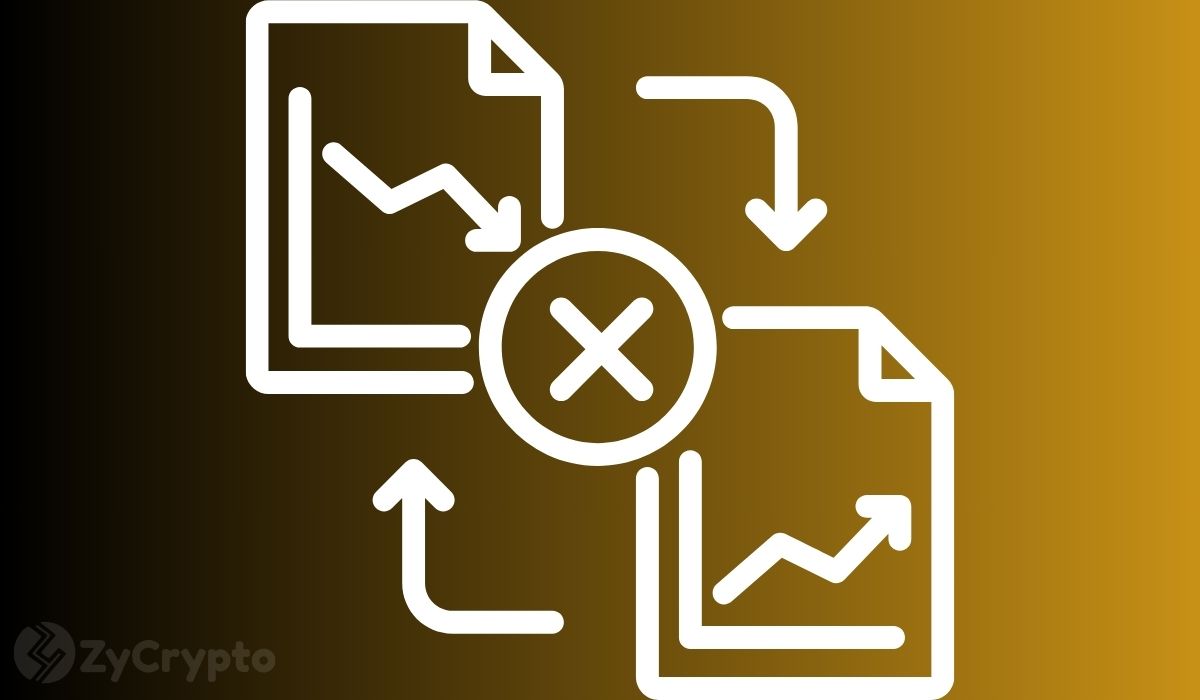
Coinbase researchers suggest that crypto prices may find their floor in mid-2025 before a wider recovery. The Bitcoin (BTC) price trades below the 200-day moving average, signaling a bearish trend that puts traders on high alert. Furthermore, the COIN50 index dropped in several key metrics, indicating caution in a range of altcoins. Bullish Outlook Wanes A new Coinbase institutional report depicts the current market realities amid evolving macro trends. According to the release, converging signals may be forming at the start of a crypto winter, as negative sentiments overshadow the bulls. This year, Bitcoin has faced major obstacles to its potential uphill run. The crypto leader by market cap saw crashing prices spilling into altcoins. After breaking a new all-time high above $108k, the asset bowed to the macro trends as the stock market correlation continued. As a result, Bitcoin recorded flash dips and sits at $83,700. The asset’s 200-day moving average shows a sharp decline, highlighting a bearish phase that kicked off in March after a previous deep. While the first quarter had its fair share of headwinds, Q2 2025 kicked off with President Trump’s sweeping tariffs. A look at the COIN50 index reiterated crashing trader sentiments, as assets have been trading under bearish zones since late February. This marked the end of speculations for an altcoin season, at least for the short term, as prices fell through multiple support levels. In January, altcoin bulls predicted a massive altcoin season that would fuel assets to multiple all-time highs. “Indeed, this is consistent with the total crypto market cap (ex-BTC) falling by 41% from its December 2024 high to $950B, compared to a (less than) 20% decline in bitcoin over the same period. This disparity underscores the higher volatility and risk premium inherent to altcoins further down the risk curve… Thus, we think this warrants taking a defensive stance on risk for the time being.” Crypto VC Funding Declines The dwindling market cap lowered bullish expectations ahead of the second quarter. Meanwhile, institutional capital brought fresh shock to the market. In recent months, institutional funds have triggered massive asset growth, leading to mass adoption. According to the report, crypto VC funding grew from the last quarter, but it’s still at a 60% low compared to the 2021/2022 cycle. A low capital inflow reduces investment and limits large accumulation for institutions. Overall, this delays market expectations for a bull cycle. CoinDesk
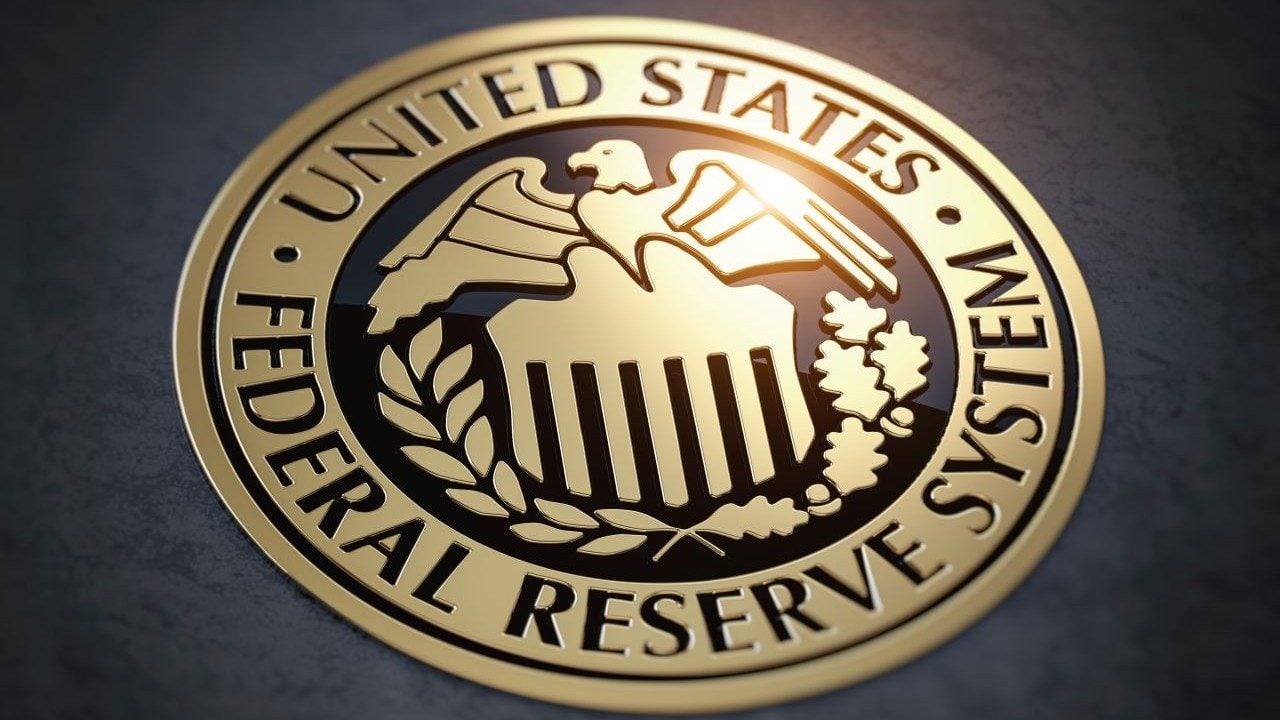
Bitcoin Holds Firm as Chatter About Fed Independence Gets Louder
The digital asset’s price remained largely unchained on Good Friday even after President Donald Trump threatened to fire Federal Reserve Chairman Jerome Powell the day before. Bitcoin Remains Resilient As Fed Independence Debate Heats Up President Donald Trump blasted Federal Reserve Chair Jerome Powell on Thursday for not cutting rates and threatened to fire him, CoinDesk




